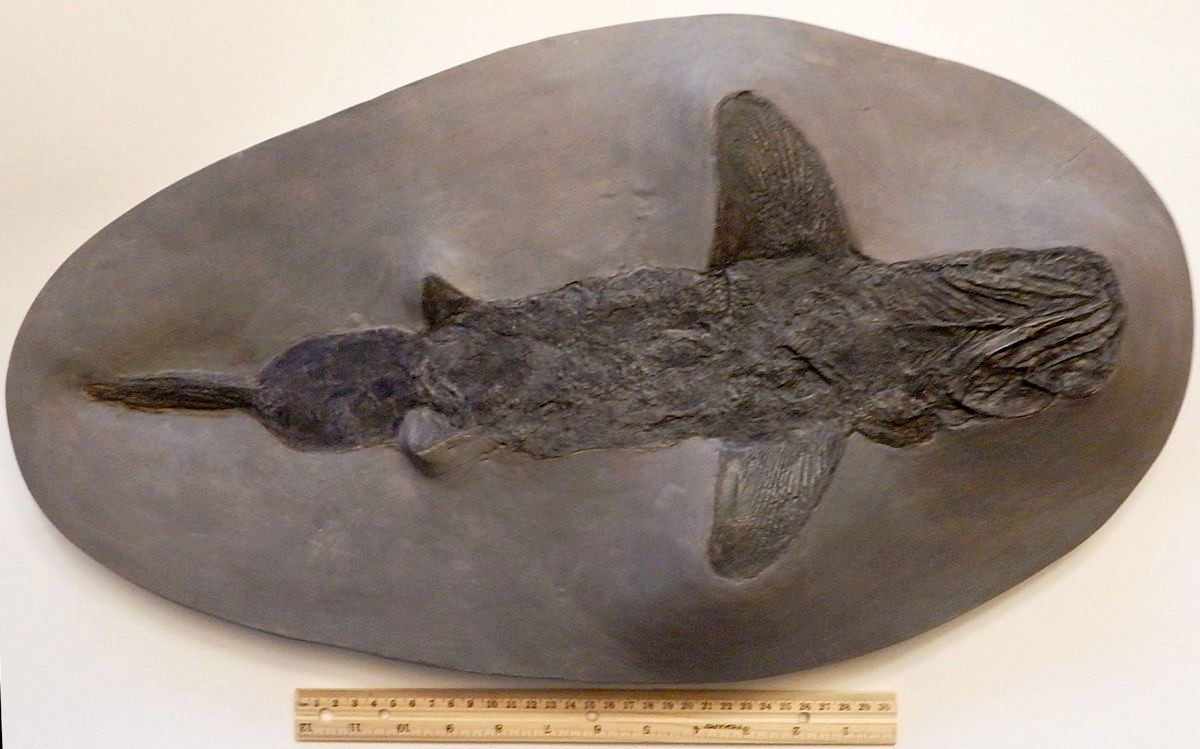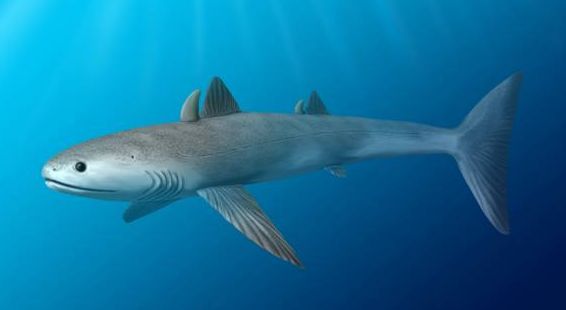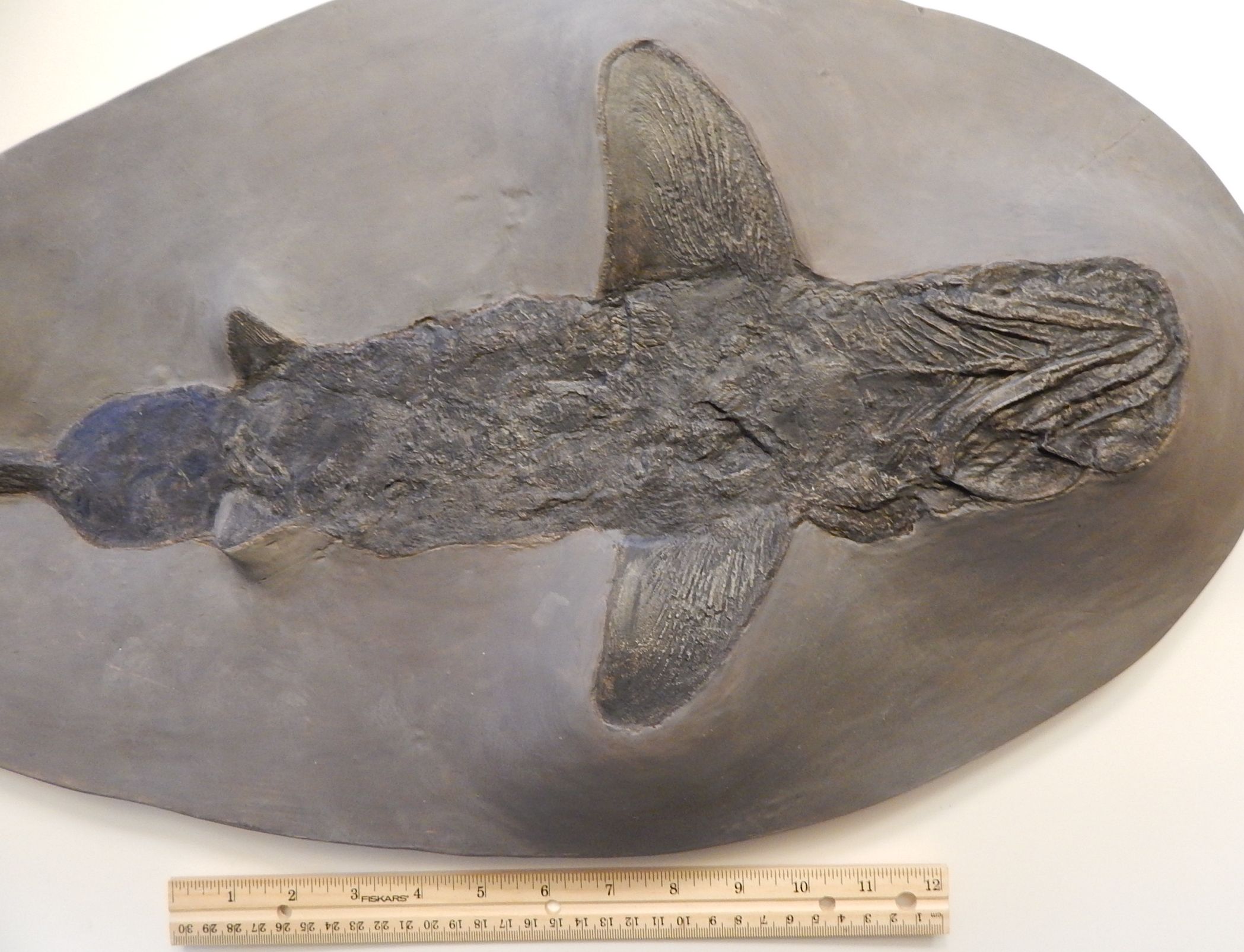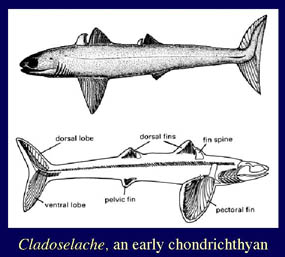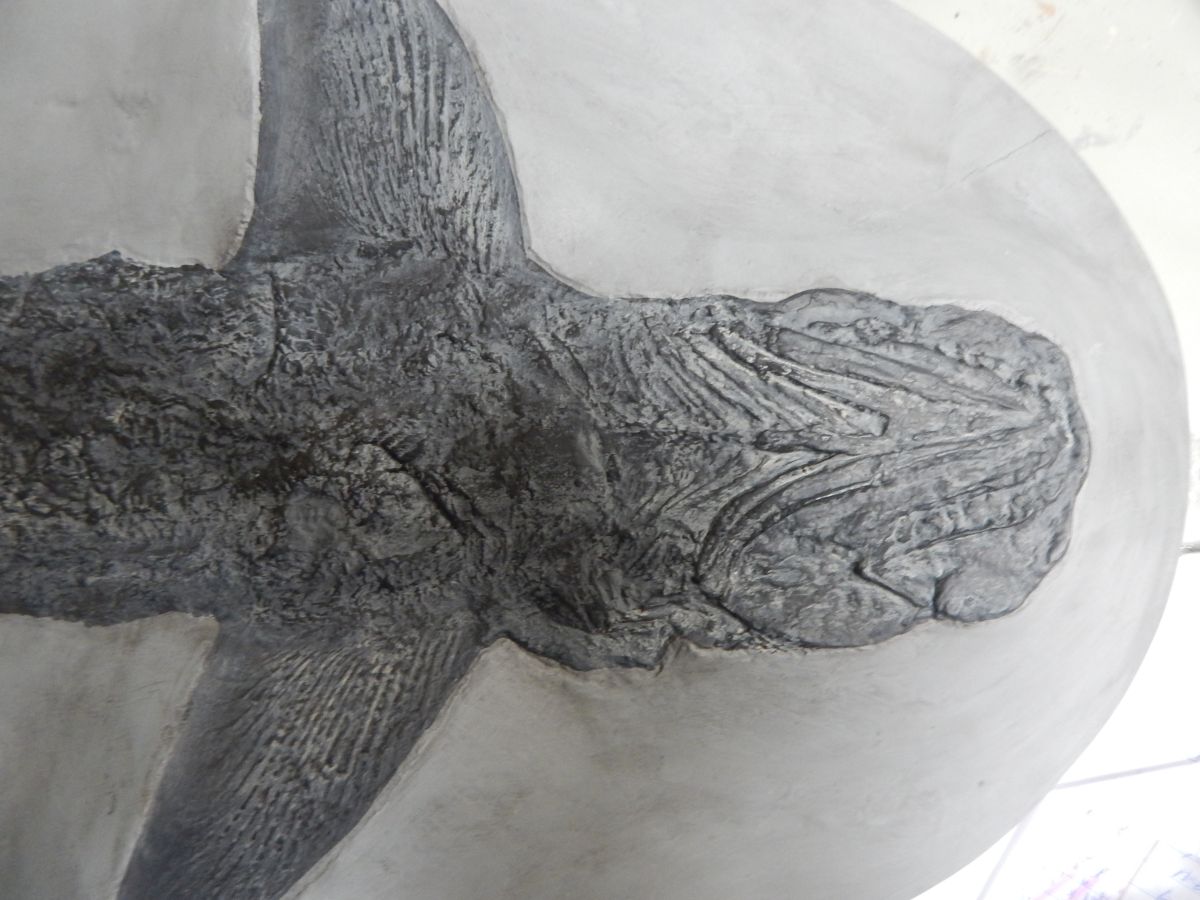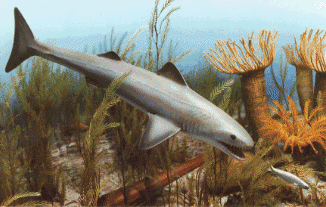Museum Quality Cast of Ancient Shark from Cleveland Shale
Cladoselache fyleri
Cleveland Shale Formation
Northern Ohio
Devonian Period
Approx. 370 million years old
Cladoselache was a fast swimming predatory shark that could grow up to 1.2 meters (almost 4 feet). It
lived in a shallow inland seas that covered what is now northern Ohio during Devonian times, approximately 370
million years ago.
Whereas most fossil sharks are preserved as teeth only,(since sharks had relatively soft, cartilaginous skeletons),
specimens of Cladoselache , such as the one shown in this museum quality cast, show the outline of the entire
body and many internal details, including distinct fin rays, and small tricuspid teeth in the distinct
jaws. Some specimens including this one even show apparent indications of stomach contents. Studies of these
contents indicate that it's common prey included smaller fish, shrimp-like arthropods, and odd worm-like
creatures called Conodonts (identified by their unique teeth). Cladoselache itself was a frequent
prey of huge armored fish such as the famous Dunkleosteus which could grow to over 15 feet.
Cladoselache shows an interesting combination of ancestral and derived features. Like many ancient sharks,
it had a short, rounded snout, and a mouth located at the front of the head rather than underneath as most modern sharks.
Its stream-lined body with strong side keels at the back, and a large crescent-shaped tail fin are apparent adaptions for
fast swimming. That Cladoselache was a high-speed predator is further supported by some stomach contents showing
remains of small fish that were swallowed whole from the tail end.
Unlike most ancient and all modern sharks that had tiny scales over their entire bodies, Cladoselache
apparently lacked scales except along the edges its fins, and around the mouth and eyes. Another unusual feature
of Cladoselache is that unlike any other ancient or modern shark, the males apparently lacked claspers -
the paired reproductive structures used to transfer sperm to females - causing some paleontologists to surmise that
they utilized internal fertilization.
